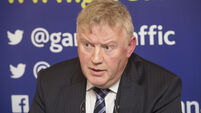An infamous heist: Antique sale recalls Britain's biggest robbery

The daring heist that was Britain’s biggest robbery is recalled in the sale of a rare £1 million Treasury bill at Dix Noonan Webb in London on June 24.
A knifepoint daylight mugging resulted in the theft of a staggering £292 million in treasury bills.










